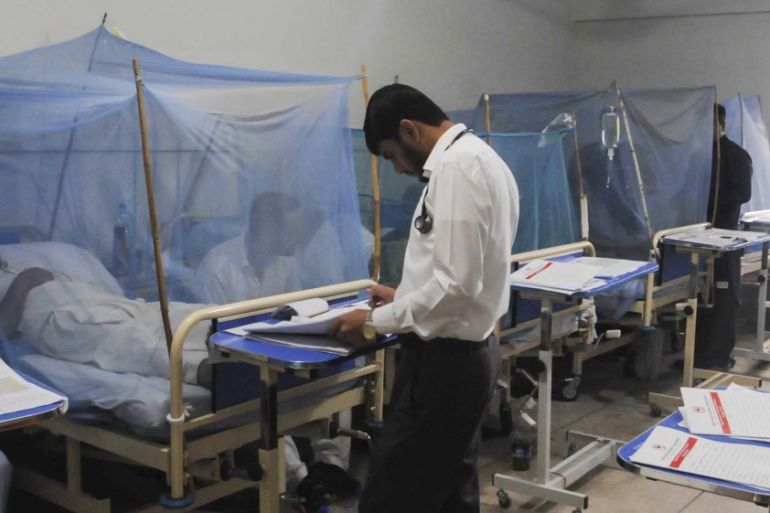Record-high 44,000 dengue cases reported in Pakistan
Mosquito-borne infections soar to record-high number in the country this year with 66 deaths so far.

A record-breaking 44,000 people have been infected with mosquito-borne dengue in Pakistan this year, a senior health official said, as increased outbreaks linked to rising temperatures and erratic rainfall ravage other parts of Asia.
Rana Safdar, a senior official at the National Institute of Health (NIH), told AFP news agency on Wednesday the figure is a huge leap from the previous record of 27,000 infections in 2011.
Keep reading
list of 3 itemsDengue fever spreads in Pakistan’s Punjab
Why is Bangladesh grappling with a record dengue fever outbreak?
Safdar said 66 people were killed by the disease so far in 2019, compared with 370 in 2011.
He blamed climate change for the surge, but would not elaborate. The government was “employing all available resources at its disposal to contain the problem”, he said.
The highest number of patients was recorded in the capital, Islamabad, and the neighbouring city of Rawalpindi, where 12,433 people were found infected with the virus, with 22 deaths.
The southern province of Sindh had 10,142 cases and 26 deaths, according to NIH data shared with local media outlet the Dawn. There were 9,260 cases in Punjab, the most populous province.
Dr Mahseema Siddique, who treats dengue patients, blamed the government for the rise in cases, saying local authorities in Punjab and Islamabad, in particular, failed to take precautions such as covering up water reservoirs or spraying anti-dengue chemicals.
“They woke up only after hundreds of people got infected and that was too late. There are a large number of areas where spray teams could not make it,” he said.
‘Breakbone fever’
Dengue is transmitted mainly by the Aedes Aegypti mosquito, which thrives in densely populated tropical climates and breeds in stagnant pools of water.
Mosquitoes pick up the virus from infected humans – even asymptomatic ones – and pass it along to other people through bites.
Infections have steadily climbed across the globe since the 1970s because of rising temperatures and irregular monsoon rains linked to climate change, which allow for ideal mosquito breeding conditions.
This year outbreaks have rampaged through Southeast Asia in particular, infecting hundreds of thousands, killing hundreds, and crippling healthcare systems as governments struggle to contain the untreatable virus.
Dengue is mostly found in crowded areas, and breakneck urbanisation across the globe has helped the virus thrive.
Dubbed “breakbone fever”, it inflicts suffering, with intense flu-like symptoms: severe headache, pain behind the eyes, full-body aches, high fever, nausea, vomiting, swollen glands and rashes.